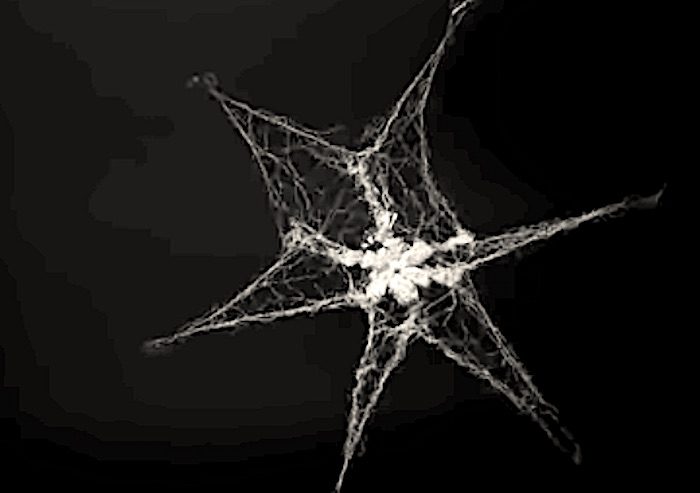
© University of Surrey
RemoveDEBRIS, based out of the University of Surrey and funded by a variety of partners including the European Commission and Airbus, has had the goal of finding a low-cost space junk removal system for years.
Back in June, the RemoveDEBRIS system was deployed from the International Space Station. On September 16th, the group began to proceed with in-space testing.
Operating over 186 miles (30o km) above the Earth, the RemoveDEBRIS system set out to
capture a tiny satellite known as a CubeSat. With a net shooting off at around 44 MPH (20 meters per second) and a vision based navigation including cameras and LiDAR, the net was able to quickly capture the runaway CubeSat."It worked just as we hoped it would," says Guglielmo Aglietti, director of the Surrey Space Center,
speaking to the BBC. "The target was spinning like you would expect an uncooperative piece of junk to behave, but you can see clearly that the net captures it, and we're very happy with the way the experiment went."
If further testing proves equally successful, the RemoveDEBRIS mission will have a large task ahead of it. Known within the space community as Active Debris Removal, or ADR, space-cleaning systems are widely expected to become increasingly valuable as thousands of small satellites, weighing 110 pounds (500 kilograms) or less, become more common. Thousands
are expected to launch in the coming years.
And that's not even counting the thousands of pieces of space junk currently in orbit.
By the end of 2017, the European Space Agency had determined that there were 19,894 pieces of space junk circling the Earth, coming to a combined weight of least 8135 tonnes. That's more mass than the metal structure of the Eiffel Tower. ADR systems will help to make sure that the Low Earth Orbit, or LEO, remains clear of clutter.
Next up for the RemoveDEBRIS system is figuring out how to manoeuvre the space junk once it's captured. "After you grab something with a net, you want to tow your piece of debris down to bury it in the atmosphere," says Aglietti,
speaking to The Verge. "In our experiment, we just test the net. We're not testing the towing part."
The towing part will consist of a drag sail, relying on particles within the LEO to push on the sail and move the captured space junk towards Earth.
There's more than one way to get rid of space junk, of course. A group of researchers at the Air Force Engineering University in China want to
equip a satellite with a laser to get the job done.

Reader Comments
[Link]
"Man-made pieces of scrap fly around the planet at approximately 24,800 MPH ..."
"Firing at around 44 MPH (20 meters per second), the RemoveDEBRIS net will then hone in on its prey"
Think they may need to address the speed differential
The aim is to tell enemy: We can catch your satellites.